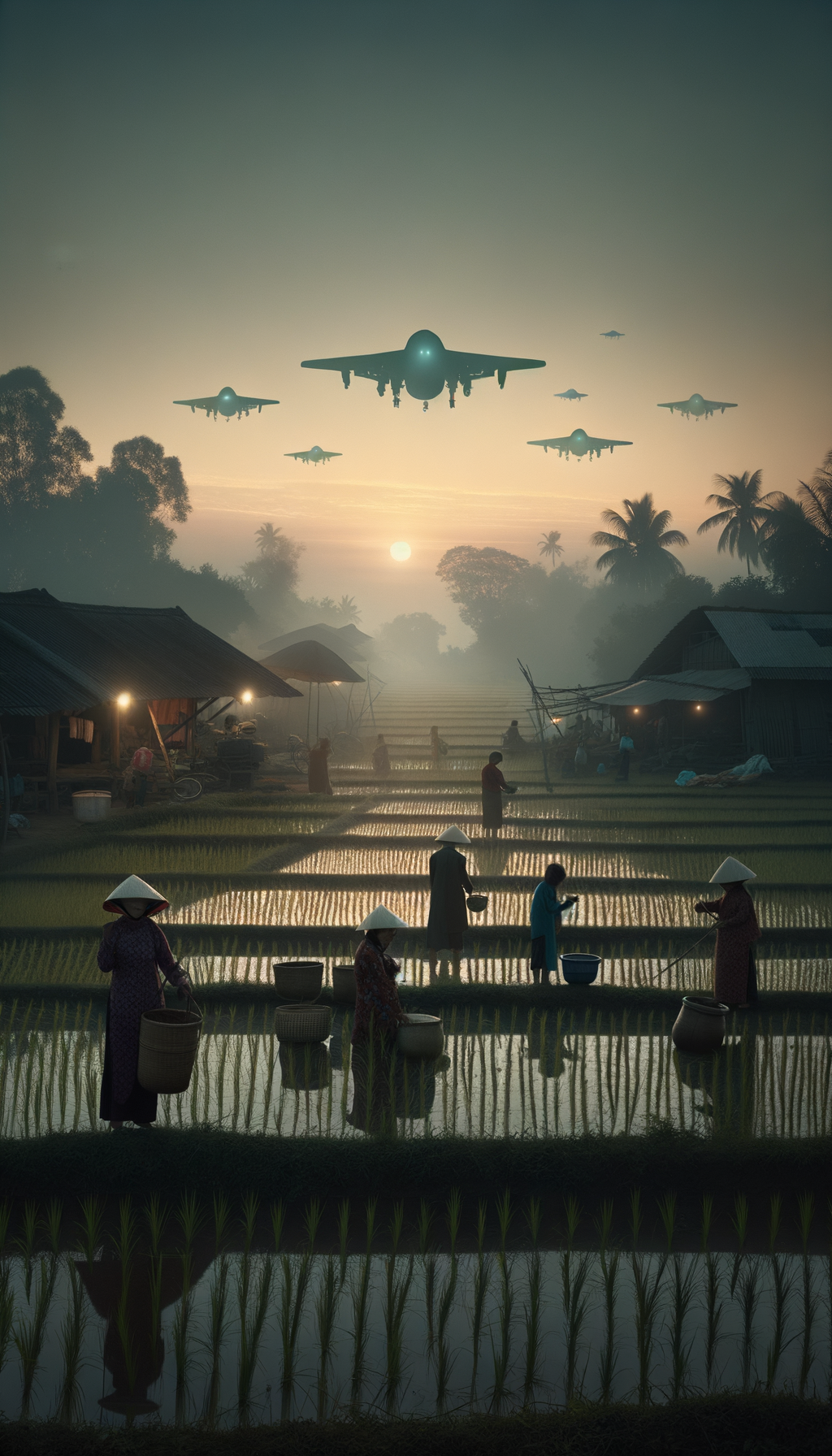Vietnam – The Shadows of My Lai – March 16, 1968
TLDR;
- Event: On March 16, 1968, American soldiers from Company C, 1st Battalion, 20th Infantry Regiment, 11th Brigade, Americal Division, massacred approximately 504 unarmed civilians in the hamlet of My Lai, Vietnam, during the Vietnam War.
- Context: The massacre occurred amidst the frustrations and blurred lines of combat in the Vietnam War, with soldiers acting on orders to engage suspected Viet Cong combatants.
- Impact: The My Lai Massacre, once concealed, was exposed to the public, leading to widespread anti-war protests in the United States and a reevaluation of the war’s moral implications.
- Legacy: The event remains a stark reminder of the Vietnam War’s brutal realities and the consequences of dehumanizing the enemy, influencing discussions on military ethics and the nature of warfare.
–
Story
The sun rose over the hamlet of My Lai, casting long shadows across the rice paddies. It was a day like any other in the war-torn landscape of Vietnam. But for the villagers, it would become a day of unimaginable horror. As the sound of helicopters filled the air, American soldiers descended upon the village, their mission shrouded in the fog of war.

By 1968, the Vietnam War had become a quagmire, with American forces struggling against a determined Viet Cong insurgency. Frustration and fear ran high among the troops, and the line between enemy combatants and civilians blurred dangerously. On March 16, soldiers from Company C, 1st Battalion, 20th Infantry Regiment, 11th Brigade, Americal Division, entered My Lai with orders to engage suspected Viet Cong combatants. What followed was a descent into chaos and brutality.
The soldiers, driven by a toxic mix of fear, anger, and confusion, unleashed a massacre upon the unarmed villagers. Over several hours, approximately 504 civilians were killed. The hamlet was left in ruins, a silent testament to the horrors of war. The My Lai Massacre, once hidden, eventually came to light, shocking the world and igniting fierce anti-war protests across the United States.
The massacre at My Lai became a symbol of the Vietnam War’s moral complexities and the devastating impact of dehumanizing the enemy. It forced a nation to confront the dark side of its military actions and question the very nature of the conflict.
The shadows of My Lai lingered long after the last shots were fired, a haunting reminder of the cost of war.
–
| Would a different command have changed the course of that fateful day? |